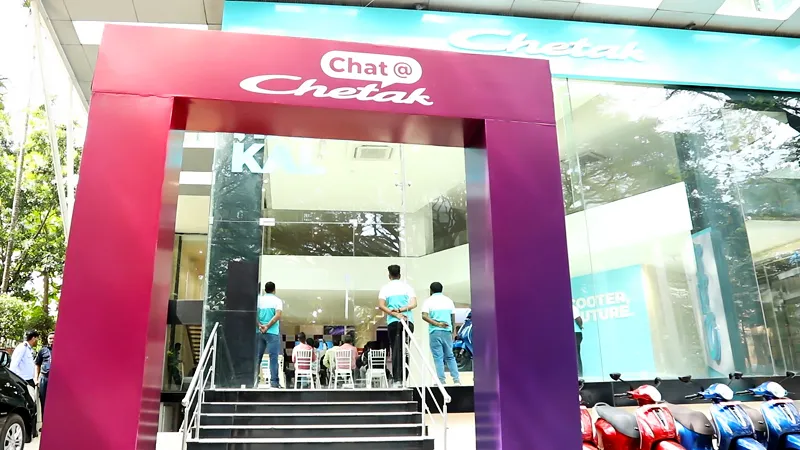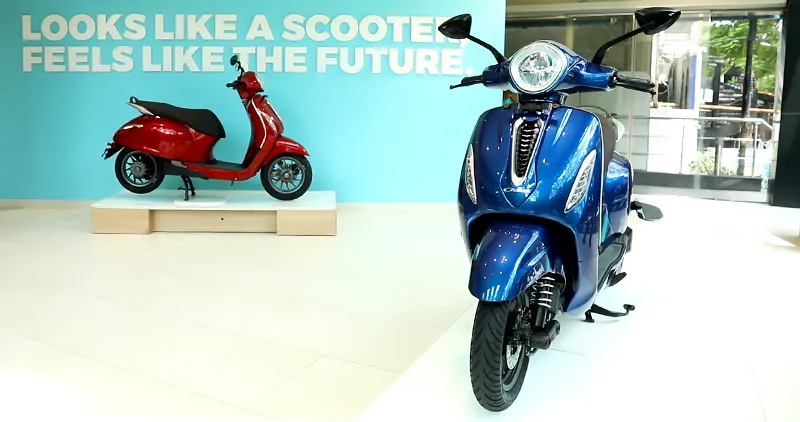Focusing on scooters in electric two-wheeler segment, says Eric Vas, President, Urbanite
In an interaction with AutoStory, Eric Vas, President, Bajaj Urbanite, said, Bajaj is the only two-wheeler OEM in the country to have full control over its technology stack, including battery, motor, and BMS.
The electric vehicle (EV) ecosystem is expanding in India, especially the two-wheeler segment. While a major chunk of the electric mobility revolution has been credited to newly-formed technology startups, a few established automobile OEMs have also driven the growth in this space.
Bajaj Auto, with its Chetak electric scooter, is one of the major stakeholders in the electric two-wheeler industry. In a recent interaction, Erica Vas, President, Urbanite, the EV vertical of Bajaj Auto, gave our host Karan Kashiappa some valuable insights about the company’s future roadmap and other developments.
Expansion of footprint
Bajaj currently retails the Chetak electric scooter in 43 locations across the country. The Chakan-based automobile manufacturer intends to expand its footprint to more than 80 centres across India by the end of the current fiscal year.

Bajaj Chetak currently on sale in 43 centres across the country
Earlier, Chetak scooters were being retailed out of KTM showrooms in all locations, but that has started to change since early 2022. Now, the Bajaj Chetak line up will have its dedicated range of independent showrooms and service points, separate from the KTM stores. This process is expected to be completed by March 2023. This will help Chetak expand to smaller Tier II centres across the country.
Focus remains on electric scooters
According to Vas, Bajaj is able to dispatch an average of around 3,000-3,500 units of Chetak to retail stores every month. The company is hopeful that with the easing of the shortage of semiconductors, production can become more seamless and efficient in the near future.
Vas also pointed out that Bajaj is currently laying its focus only in the scooter segment for electric mobility, since motorcycles bring a different set of challenges. He further mentioned that scooters have a tighter geographical operational limit, which allows them to have a smaller single-charge range. This makes electric scooters a more pocket-friendly solution for urban commutes.

Bajaj to focus on expanding Chetak lineup with more electric scooters
On the other hand, motorcycles aren’t strictly restricted to a specific demography and require a stronger battery pack that offers longer, single-charge range. This brings challenges like larger battery packs that result in higher input and manufacturing cost, adding to the final price of the two-wheeler.
Earlier last year, Rajiv Bajaj, Managing Director of Bajaj Auto, said the company will be launching one new electric scooter every year going forward, and all future electric models will be part of the Chetak line up. Vas further enlightened that the target consumers for Chetak are existing owners of 100cc-125cc petrol-powered scooters who want to make the transition to cleaner forms of mobility.
Concern over subsidies
As per Bajaj Auto’s estimation, the current market penetration for electric two wheelers with respect to their ICE-powered counterparts stands at around 6%. The EV growth in India has been fuelled thanks to the subsidies offered under the FAME II scheme by the Central Government and various other state subsidies.
When asked about the FAME II benefits being discontinued after March 31, 2024, Vas remained guarded and hopeful that the subsidies wouldn’t be withdrawn all at once. He added that the government realises the importance of these subsidies in driving the growth for electric mobility sales.
Vas also spoke about Bajaj’s new facility in Akurdi near Pune, Maharashtra, that will be the manufacturing hub of future electric two wheelers. This new plant houses various departments, including battery assembly, designing studio, paint shop, etc. The premise, which was previously used for manufacturing petrol-powered Chetak scooters, also hosts the company’s new R&D facility.
Edited by Megha Reddy







